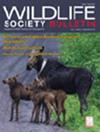Assessment of technological developments for camera-traps: a wireless transmission system and solar panels
IF 1.5
4区 环境科学与生态学
Q3 Environmental Science
引用次数: 0
Abstract
Camera-trapping is considered a cost-efficient method to monitor wildlife, but relevant performance constraints remain. We assessed performance and cost-benefit for 2 recent technological innovations: (i) a wireless transmission system where cameras communicate in a network, and (ii) using solar panels as a camera's sole power supply. The maximum distance between cameras that ensured wireless connection varied between 2 km in open habitats and 335 m in forest habitats with dense tree cover. The cost of using the wireless transmission system was lower for surveys run for >45 days and for >15 sampling units (i.e., camera-trap sites). For surveys longer than 15 days, using the wireless transmission system required, on average, 8 fewer days of fieldwork. We measured the performance of the solar panels in terms of capture probability, and the solar-powered cameras (β = −0.015 ± 0.01 in the log scale) outperformed battery-powered cameras (β = −0.103 ± 0.005) as capture rate decreased more slowly, particularly for nighttime events (difference in capture probability of the solar-powered relative to the battery-powered cameras at night, β = 0.09 ± 0.01). We consider that, although camera-traps with wireless transmission can provide a return on investment for a wide range of survey designs, the constraints on maximum distance for transmission are a limitation. Despite the higher cost, we recommend solar-powered camera-traps as they had improved performance with a higher proportion of species events captured than by battery-powered cameras.

相机陷阱技术发展评估:无线传输系统和太阳能电池板
照相机诱捕被认为是一种具有成本效益的野生动物监测方法,但仍存在相关的性能限制。我们对最近的两项技术创新进行了性能和成本效益评估:(i) 无线传输系统,相机在网络中进行通信;(ii) 使用太阳能电池板作为相机的唯一电源。确保无线连接的摄像机之间的最大距离在开阔生境中为 2 千米,在树木茂密的森林生境中为 335 米。在 45 天和 15 个取样单位(即相机捕捉点)的调查中,使用无线传输系统的成本较低。对于超过 15 天的调查,使用无线传输系统所需的实地工作时间平均减少了 8 天。我们用捕获概率来衡量太阳能电池板的性能,太阳能相机(β = -0.015 ± 0.01 对数)的捕获率下降速度比电池相机(β = -0.103 ± 0.005)慢,尤其是在夜间事件中(太阳能相机与电池相机在夜间捕获概率的差异,β = 0.09 ± 0.01)。我们认为,虽然带有无线传输功能的相机陷阱可以为各种调查设计提供投资回报,但最大传输距离的限制是一个局限。尽管成本较高,但我们还是推荐使用太阳能相机诱捕器,因为与电池供电的相机相比,太阳能相机诱捕器的性能更好,捕获的物种事件比例更高。
本文章由计算机程序翻译,如有差异,请以英文原文为准。
求助全文
约1分钟内获得全文
求助全文
来源期刊

Wildlife Society Bulletin
BIODIVERSITY CONSERVATION-
CiteScore
2.10
自引率
13.30%
发文量
0
期刊介绍:
The Wildlife Society Bulletin is a journal for wildlife practitioners that effectively integrates cutting edge science with management and conservation, and also covers important policy issues, particularly those that focus on the integration of science and policy. Wildlife Society Bulletin includes articles on contemporary wildlife management and conservation, education, administration, law enforcement, and review articles on the philosophy and history of wildlife management and conservation. This includes:
Reports on practices designed to achieve wildlife management or conservation goals.
Presentation of new techniques or evaluation of techniques for studying or managing wildlife.
Retrospective analyses of wildlife management and conservation programs, including the reasons for success or failure.
Analyses or reports of wildlife policies, regulations, education, administration, law enforcement.
Review articles on the philosophy and history of wildlife management and conservation. as well as other pertinent topics that are deemed more appropriate for the Wildlife Society Bulletin than for The Journal of Wildlife Management.
Book reviews that focus on applied research, policy or wildlife management and conservation.
 求助内容:
求助内容: 应助结果提醒方式:
应助结果提醒方式:


